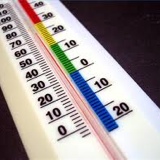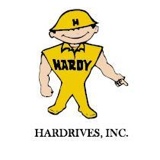Title Page
-
Site conducted
-
Conducted on
-
Prepared by
-
Location
Cranes
-
CRANES
-
Are cranes and derricks restricted from operating within 20 feet of any electrical power line?
-
Are rated capacities, operating speed, and instructions posted and visible to the operator?
-
Does the operator understand and use the load chart?
-
Is the operator able to determine the angle and length of the crane boom at all times?
-
Is the crane machinery and other rigging equipment inspected daily prior to use to make sure that it is in good condition?
-
Are accessible areas within the swing radius barricaded?
-
Are tag lines being used to prevent dangerous swing or spin of materials when raised or lowered by crane or derrick?
-
Is a fire extinguisher of at least 5BC rating provided on the crane?
-
Are illustrations of hand signals to crane and derrick operators posted on the job site?
-
Does the rigger/signalman use correct signals for the crane operator to follow?
-
Are crane outriggers used as required?
-
Do crane platforms and walkways have anti-skid surfaces?
-
Concrete
-
Is formwork and shoring adequate to support all intended loads during concrete placement?
-
Are protruding rebars covered or bent over where work must be performed overhead?
-
Do employees wear gloves and eye protection during stripping operations?
-
Are nails removed or bent over stripped forms?
-
Are clear pathways maintained through stripping areas?
-
Is broken, worn, or damaged wire rope removed from service?
-
Are exhuast pipes guarded or insulated where employees might contact them?
-
Are guardrails, hand holds, and steps provided for safe and easy access to all areas of the crane?
-
Are trolley and two block limits on hammerhead tower cranes working?
-
Have tower bolts been properly torqued?
-
Have overload limits been tested and correctly set?
-
Do personnel platforms suspended from crane hooks conform to OSHA/MOSH requirements?
-
Does the crane operation comply with manufacturer's specifications?
-
Are flagpersons provided with and made to wear high visibility garments while working in vehicular traffic?
-
Are employees made aware that metal ladders are not to be used where they may contact electrical conductors or equipment?
-
Are the warning garments of reflectorized material?
-
Are ladders with broken or missing rungs or split side rails tagged and taken out of service?
-
Are flagpersons knowledgeable of standard flag signals to control traffic effectively?
-
Are metal ladders inspected for damage or signs of corrosion?
-
Are portable wood ladders and metal ladders adequate for their purpose, in good condition, and provided with secure footing?
-
Are areas around the top and bottom of the ladder kept clear?
-
Are portable ladders used at such a pitch that horizontal distance from the top bearing to the foot of the ladder is about 1/4 of the working length of the ladder?
-
Are ladders prohibited from being used in a horizontal position as platforms, runways, or scaffolds?
-
Are portable ladders tied, blocked, or otherwise secured against movement?
-
If simultaneous two-way traffic is expected, is a double cleat ladder installed?
-
Are the rungs of ladders uniformly spaced?
-
Are the side rails of the ladder extending at least 36 inches above the landing?
-
Did a competent person provide ladder safety training to all employees?
-
Are stairways or ladders provided at all break in elevation 19 inches or higher to provide safe access for employees?
-
Are stairways in good condition and are stair rails provided for stairways having four or more risers?
-
Construction Checklist
Lasers
-
Are only trained and qualified employees assigned to operate laser equipment?
-
Do laser operators carry proof of qualification?
-
Is overhead protection provided over the cage or platform and the operator's position?
-
Are employees who may be potentially exposed provided with anti-laser eye protection?
-
Has wire rope been inspected for harmful defects?
-
Are placards warning of lasers posted in the laser use area?
-
When the laser is not in use are beam shutters or caps used or is the unit turned off?
-
Is it a strict requirement that the laser beam shall never be directed at employees?
-
Are sheave bearings well lubricated?
-
Are brakes capable of stopping and holding 125 percent of the rated load?
Lift Trucks
-
Before being placed into service are powered industrial trucks examined for any conditions that may adversely affect the safety of the vehicle?
-
Are defective powered industrial trucks immediately repaired or removed from service?
-
Are the high lift rider trucks equipped with an overhead guard to protect the operator?
-
Is a vertical load backrest provided to prevent raised loads from falling rearward?
-
Are powered industrial trucks provided with an audible warning device to alert others in the area of their presence?
-
Are only trained and qualified personnel permitted to operate powered industrial trucks?
-
Are the rated load capacities of the powered industrial trucks clearly marked and not exceeded?
-
Are raised loads kept as close to the ground as possible to prevent tipping while traveling?
-
Are trucks driven with the load facing upgrade, when ascending or descending grades in excess of 10 percent?
-
Are the load engaging means fully lowered, controls neutralized, power shut off, and brakes set on unattended powered industrial trucks?
-
Are unauthorized riders prohibited from riding on lift trucks?
-
Are seat belts worn by operators?
-
Construction Checklist
-
Protection from Falls
-
The largest percentage of fatalities that occur each year are caused by falls.
-
Scaffolding
-
Is the footing of the scaffold sound, rigid, and capable of carrying 4 times the maximum intended load?
-
Guardrail Systems
-
Is the scaffold erected under the supervision of someone competent in scaffold erection?
-
On walking working surfaces 6 feet or more in height, are guardrail systems used to prevent falls from unprotected sides, edges, holes, remote excavations, and wall openings?
-
Are guardrails provided on scaffolds more than 10 feet above the ground?
-
Are the top edge heights of guardrail system members 42 inches, plus or minus 3 inches, above the walking working surface?
-
Is planking of sufficient stress grade or scaffold grade timber?
-
Is planking of platforms overlapped not less than 6 inches or more than 12 inches or secured from movement?
-
Are wire rope guardrail systems more than 1/4 of an inch in diameter or greater and flagged at 6 foot intervals?
-
Are canopies, screens, or toeboards installed to prevent falling objects?
-
Are labeled covers secured over holes?
-
Where persons work under scaffold, is a 1/2 inch mesh screen provided between toeboard and guardrail?
-
Are poles, legs, or uprights of scaffolds plumb and securely braced to prevent swaying and displacement?
-
Are defective parts on scaffolds immediately replaced or repairetext - Personal Fall Arrest System (PFAS)
-
Are guardrails and toeboards installed on all open sides and ends of scaffold platforms?
-
Is the PFAS used to prevent falls from heights above 6 feet?
-
Was the PFAS designed and installed by a qualified person to maintain a safety factor of two?
-
Will the PFAS limit the maximum arresting forces imposed on an employee wearing a body harness to 1,800 pounds?
-
Is the PFAS rigged in such a manner that an employee can neither free fall more than 6 feet nor contact any lower level?
-
Safety Net Systems
-
Are safety nets installed as close as practicable but no more than 30 feet below the walking working surface?
-
Are safety nets extended beyond the edges of the walking working surfaces 8 to 13 feet depending on the potential fall distance?
-
Is the potential fall area from the walking working surfaces on bridges to the nets unobstructed?
-
Is a certification record available stating that a competent person has inspected untested nets?
-
Construction Checklist
Tools
-
Are electric powered tools double-insulated or properly grounded?
-
Accidents with hand tools comprise five percent to ten
-
percent of compensable injuries. Many of these injuries
-
could be avoided with the proper care, maintenance, and
-
use of hand tools.
-
Is eye and face protection used when driving hardened
-
or tempered studs or nails?
-
Are tools stored in a dry, secure location where they
-
won't be tampered with?
Hand and Power Tools
-
Are hand tools and other equipment regularly inspected for safe condition?
-
Are tool handles free of splits and cracks?
Powder Actuated Tools
-
Do all users of powder actuated tools possess an "Operator's Card" to demonstrate that they have been trained?
-
Are handles wedged tightly in the heads of all tools?
-
Are impact tools free of mushroomed heads?
-
Are cutting edges kept sharp so the tool will move smoothly without binding or skipping?
-
Is sharpening, redressing, or repairing tools done properly, using tools suited to each purpose?
-
When compressed air is used for cleaning purposes is nozzle pressure safely reduced to less than 30 psi?
-
Are power saws and similar equipment provided with safety guards?
-
Are tools used with the correct shield, guard, or attachments recommended by the manufacturer?
-
Are abrasive wheel grinders provided with safety guards which cover the spindle ends, nut, and flange projections?
Trenches & Excavations
-
Has the utility company been notified of intended digging?
-
Are daily inspections made of the excavation to determine the possibility of a cave-in and are necessary steps taken to protect employees?
-
Are shoring and sloping systems used to support the walls and faces of the excavations sufficient to ensure against cave-ins?
-
Is there a ladder in the excavation?
-
Are guards kept in place and in working order?
-
Are rotating or moving parts of equipment guarded to prevent contact by employees?
-
Do operators wear eye and face protection when grinding?
-
Is the pneumatic hose line secured to the pneumatic tool?
-
Are the tool bits secured by use of safety clips or retainers to prevent accidental disconnecting?
-
Are appropriate ground-fault circuit interrupters provided at the job site?
-
Is an assured equipment grounding conductor program established and implemented at the job site?
-
Protecting Workers' Health
-
Are materials containing more than 1% asbestos (ACM) handled in accordance with the construction asbestos standard?
-
Are thermal system insulation and surfacing material found in building constructed before 1980 treated as presumed asbestos containing materials (PACM), unless demonstrated to be otherwise using the protocol of materials in the construction asbestos standard?
-
Are class II and III asbestos work operations being conducted in regulated areas?
-
Are they properly enclosed and posted?
-
Is access limited to authorized personnel?
-
Are appropriate respirators worn by entrants?
-
Is eating, drinking, smoking, and gum chewing prohibited?
-
Is there an adjacent clean room and decontamination area?
-
Are operations supervised by a competent person?
-
Do work practices and methods of control conform to the construction asbestos standard?
-
Is an exposure assessment conducted by the competent person immediately before or at the initiation of operations to determine devices provided when engineering and/or administrative controls are not adequate or feasible?
-
Is air monitoring conducted in the manner and at the frequency specified in the construction asbestos standard?
-
Have you evaluated your work site for compliance with this Law?
-
Has a chemical information list been compiled?
-
Have material safety data sheets (MSDS) been obtained or developed for all substances on the chemical information list?
-
In addition, are all 30-minute exposures maintained below 1 f/cc?
-
Has the list been sent to the Maryland Department of the Environment?
-
Are MSDS readily accessible to employees?
-
Is the chemical information list accessible to employees?
-
Are copies provided within 5 days of a request?
-
Are respirators and protective clothing properly selected and used?
-
Are respirators and containers of asbestos waste properly labeled?
-
Are waste containers impermeable and sealed prior to disposal?
-
When new substances are brought on-site are additional MSDS ordered?
-
Has an employee information and training program been implemented?
-
Have other on-site employers been informed of the nature of the asbestos-related activity and of measures to take to prevent exposure?
-
If required, has an employee medical surveillance program been implemented?
-
Are all activities involving asbestos being conducted in compliance with regulations established by the Department of the Environment?
-
Have employees been informed of their rights under this Law and procedures for obtaining information on hazardous substances?
-
Have employees been trained about the hazards of the substances, appropriate work practices, control programs, protective measures, and emergency procedures?
-
Is rescue equipment readily available for immediate use?
-
Are salamanders and fire pots vented to the outside atmosphere?
-
Are exhaust manifolds, pipes, and mufflers in good repair to eliminate harmful leakage of the engine exhaust?
-
Is there constant communication with employees in the immediate vicinity who are not in the confined space?
-
Is there a written procedure covering entry under emergency conditions?
-
Is equipment maintained in good repair to reduce the amount of unburned hydrocarbons which result in the manufacture of carbon monoxide?
-
Are pipings to the outdoors used when engines must be run for repair or adjustments while they are in enclosed areas?
-
Are carbon monoxide levels checked regularly?
-
Is employee exposure well below the allowable 50 parts per million?
-
Is natural or mechanical ventilation provided to remove harmful carbon monoxide gases?
-
Are material safety data sheets maintained on each product in use at the construction site?
-
Are agents identified which may cause harm by inhalation, ingestion, skin absorption, or contact?
-
Is the internal atmosphere tested to assure an oxygen level of not less than 19.5%?
-
If the confined space is a manhole, is it impossible for vehicular exhaust or carbon monoxide to creep into the space?
-
Has the space been examined for decaying vegetation and animal matter which may produce methane?
-
Has the space been surveyed for possible industrial waste which may contribute to the accumulation of a toxic or combustible atmosphere?
-
When there is inadequate natural air movement and adequate forced ventilation is not provided, is the internal atmosphere tested for combustible gas and air contaminants?
-
Has an adequate oxygen concentration been assured prior to testing for combustible gas and air contaminants?
-
Is the space ventilated to a safe level before employees enter?
-
If ventilation does not reduce or remove the hazardous substance, do employees wear an appropriate approved respirator to enter the space?
-
Are employees trained in the use of respirators?
-
Are electrical services other than lights made inoperable by a padlock and tagging?
-
Are employees inside and outside the confined space trained in rescue and CPR procedures?
-
Construction Checklist
Lighting (Continued)
-
Are the light fixtures raised above the worker's heads?
-
Has a determination been made as to the possibility of airborne lead exposure on the job? (Significant airborne lead exposures can occur when welding, cutting, grinding, and abrasive blasting are performed during structural steel demolition and renovation.)
-
Are wire guards grounded to the electrical grounding system?
-
Are stairways, floor opening areas, and wall opening areas well illuminated?
Noise
-
Are hearing protectors and a hearing conservation program provided for noise levels above 90 decibels?
-
Have administrative or engineering controls been applied to eliminate or reduce the excessive noise?
-
If administrative or engineering controls are not feasible, is personal hearing protection provided to reduce sound levels?
-
Is the use of hearing protection equipment enforced?
-
Is hearing protection equipment correctly fitted and maintained in a clean and sanitary condition?
-
If exposures exceed the action level, has a medical surveillance program been established?
-
Is an audiometric testing program in effect?
-
Are employees instructed in the effects of noise on hearing, the signs of over-exposure to noise, and proper use of hearing protectors?
Silica
-
Is adequate exhaust provided to remove silica dust particles from the work area or operation?
-
Are respirators provided to employees who may be over-exposed to silica dust particles?
-
Can certain grinding, sandblasting, or mixing operations be performed by wet method to reduce the airborne silica hazard?
-
If exposures exceed the permissible exposure level, have the following additional requirements been met?
-
Use of engineering and work practice controls to reduce exposures
-
Use of adequate personal protective equipment, including respiratory protection
-
Prohibition of food and beverage consumption and smoking in exposed areas
-
Establishment of a food and beverage consumption area
-
Establishment of a change area with storage facilities
-
Provision of showering facilities
-
Posting of warning signs at exposure area
Lighting
-
Are 5 foot-candles of illumination provided throughout the general construction area?
-
Are the workshops and storerooms provided with 10 foot-candles of illumination?
-
Is the first aid station illuminated to 30 foot-candles?
-
Are light guards provided where there is a possibility of breakage?














